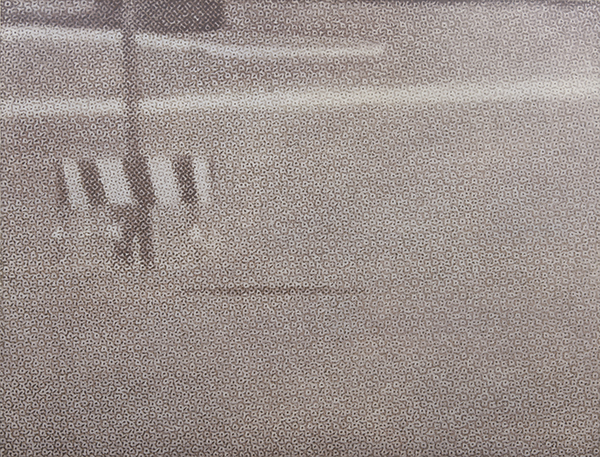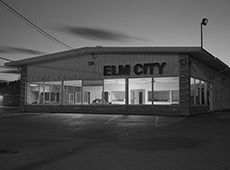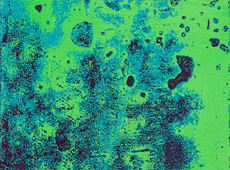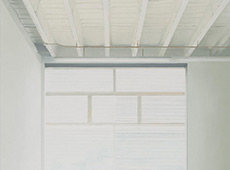I like a painting that does something, like a machine does something: you turn it on and it functions
“Since Courbet, it’s been believed that painting is addressed to the retina.
…The retinal shudder!” — Marcel Duchamp
shudder // shutter
The click of the shutter, the click of the cliché, but lets come back to that later…
I have noticed that not infrequently, when I find myself in front of a painting I have been introduced to through an invitation or an article online; that the painting in question does not give back anything more in person than the digital image I’d previously seen. It yields nothing new, no new read, no additional meaning. On occasion it may yield something less than its copy: almost seeming to function purely as a painted iteration of the digital image. The digital privileges the retinal.
© Jen Mazza,
Courtesy of the artist and Tibor de Nagy Gallery, NY. Larger | Detail
It is likely I will never forget my interview for the graduate program at MICA when I met with Grace Hartigan. Getting straight to the point she said “your slides read better than your paintings.” Which at the time I admitted as being quite true. I was not, in the end, accepted into the program, but I somehow can’t imagine that in the two years I might have spent under her guidance, that she would have given me anything to surpass this brutal but relevant challenge effected during this brief acquaintance. The paintings I had created were a surface lacking the quality of illumination which the slides possessed, a lack of illumination which often diminishes the paintings I see today in comparison to their on-screen “reproductions”.
This is not a judgment, this is an observation, I think it is likely that this quality in the work reflects something which is happening at the moment, something in and about our time.
I think all of the ways of being affected by an artwork are valid and interesting, but my question centered around what it was I wanted my own work to do. I feel it likely that I stick to painting because I enjoy the physicality of it, the goo aspect. The way the goo makes the image come over on you, not just retinally, but with the complicity of the eye it works directly on the body to engage many more senses than the one. I decided that in fact, it did not matter to me so much what a painting looked like, but what it did. What the paint depicts certainly must play a part, but it is not an end in itself, nor perhaps even the most important or interesting function of the medium.
I found an echo in the William Carlos Williams statement, “A poem is a small (or large) machine… .” A painting can be a machine. I like a painting that does something, like a machine does something: you turn it on and it functions, and continues to function without your intervention—generating, producing, developing, asking questions, making meaning—it shouldn’t stop, but should continue in its way to function in your mind and body even after you walk away.
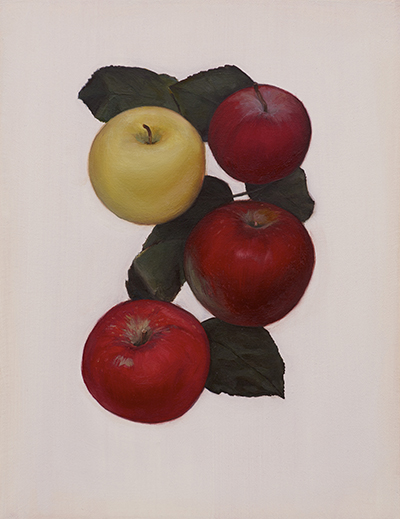
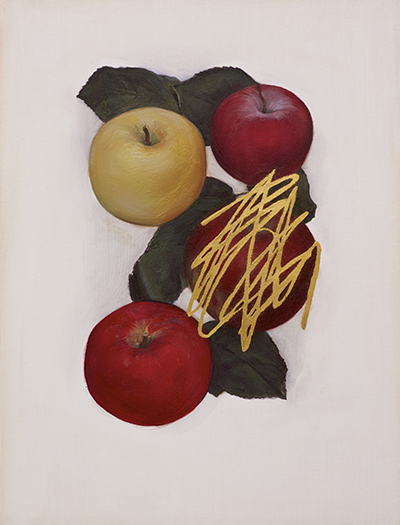
Top: Jen Mazza,
Bottom: Jen Mazza,
The retinal shudder/shutter: I am reminded of Anne Carson’s discussion of the etymology of the word cliché and the mechanism and sound that goes along with it. “Cliché is a French borrowing, past participle of the verb clicher, a term from printing meaning ‘to make a stereotype from a relief printing surface’. It has been assumed into English unchanged … partly because the word has imitative origins (it is supposed to mimic the sound of a printer’s die striking the metal) that make it untranslatable.”
The work of art should not become readily translatable: i.e., the stereotype, the thing produced, but should be the machine from which ideas, clichés included, are generated. A painting should continue to make: it should be a system of signs of the convertible variety,
Jen Mazza’s work has been the subject at solo shows at the Jersey City Museum, John Davis Gallery, Hudson, and Stephan Stoyanov Gallery, New York. She is represented by Tibor de Nagy Gallery, New York, where her exhibition, “\ /\/\/\/\/\ /\\\\\\\\\///////////\ A PAINTING IS A MACHINE“, runs through 5 December, 2015.
She holds an M.F.A. degree in Visual Art from Mason Gross School of the Arts at Rutgers University.
Subscribe to Tilted Arc
If you like this story, please consider subscribing. We are sticklers for privacy.
We will never sell or share your e-mail address.

